Visual Development graduate Chaowat “Pong” Lertsachanant of Academy of Art University recently put his knowledge and affection for San Francisco to use in illustrations for the San Francisco Chronicle’s “Throughline” series. This project visualizes how a post-Covid Bay Area will look and what it will be like to live there.
A concept artist for global game maker Electronic Arts, Lertsachanant came to California from Thailand to study in the Academy’s School of Visual Development, where he earned his MFA degree in 2019. The Chronicle discovered that his reverence for the city and his artistic skills made him an ideal candidate to illustrate the new series.
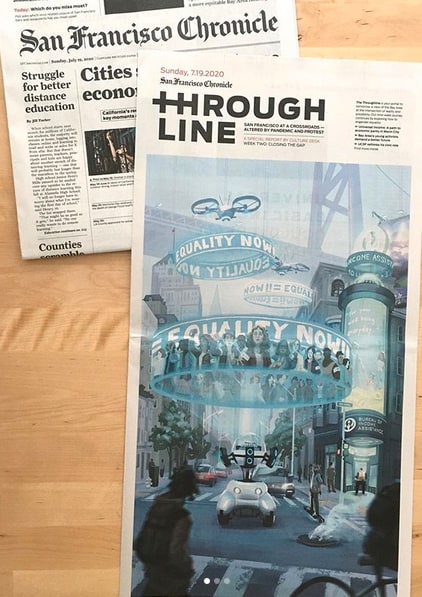
‘They Found Me’
No stranger to reaching out to others to find outlets for his creativity, Lertsachanant says the initial contact was easy with the Chronicle. “For this one, they found me. I do a lot of color in life studies and plein air painting of San Francisco, which I would post to Instagram.
“I was very lucky that they found me, and that they reached out to me through Instagram. They were looking for someone with a background in visual development, someone who could imagine what the city would look like in 10 or 20 years.
“I felt so honored that they asked me to take on the project.”
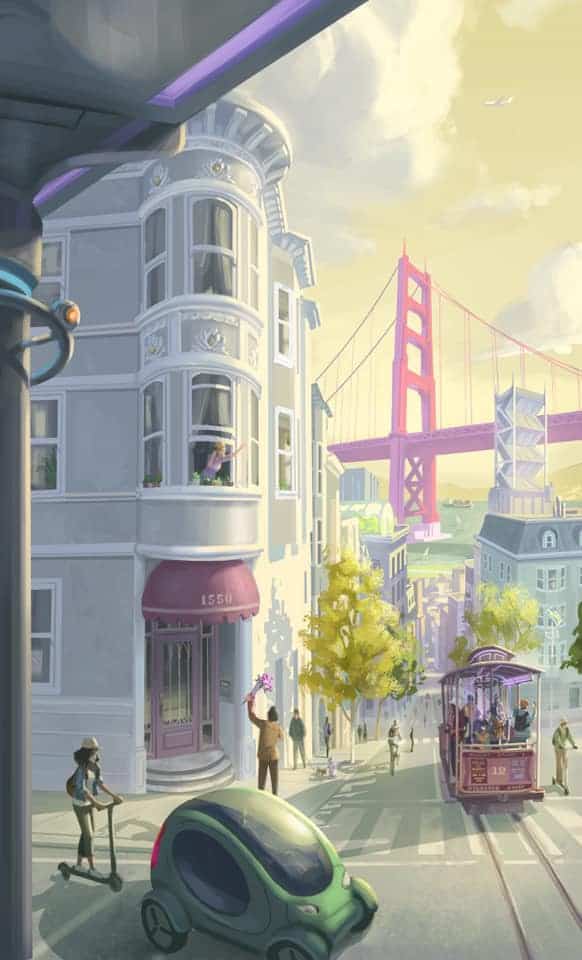
’Love Affair’
Upon arriving in San Francisco, Lertsachanant was smitten. “I really love the charm of this city,” he says. “The views are so great because of all the hills, so every scene is almost perfectly composed. I love all the varieties of people here—all different races, and people wear all kinds of different styles. And of course, I love the weather. It’s good all year long, not like home.”
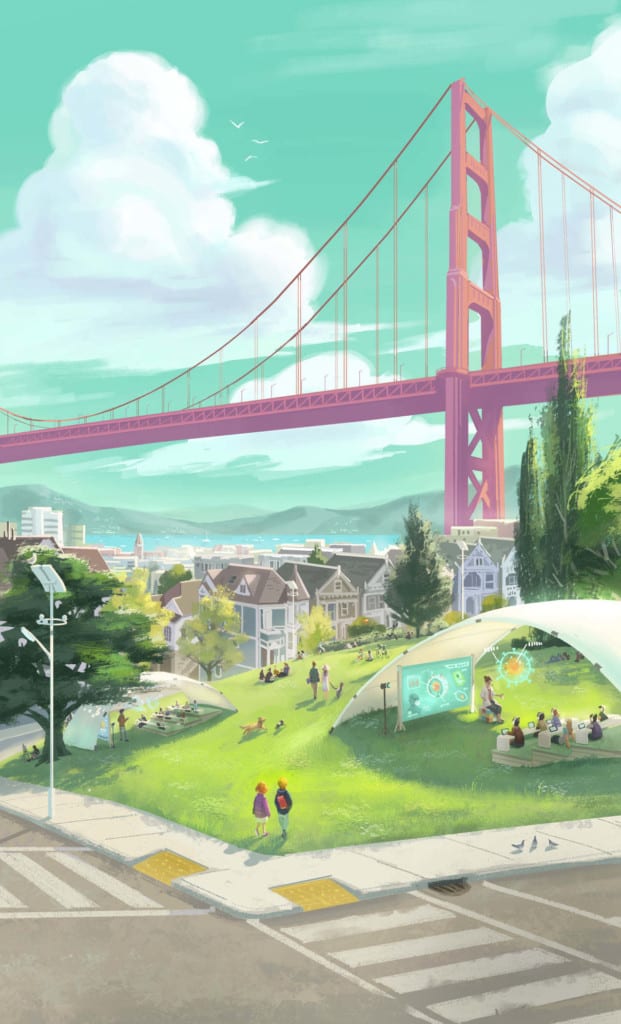
There were plenty of other attractions in the Bay Area for Lertsachanant. With his dreams of becoming a concept and visual development artist, his move to the city made a lot of sense.
“Of course, San Francisco is also very close to the industry I wanted to pursue—near all the major studios in the Bay Area but also close enough to L.A.,” he says.
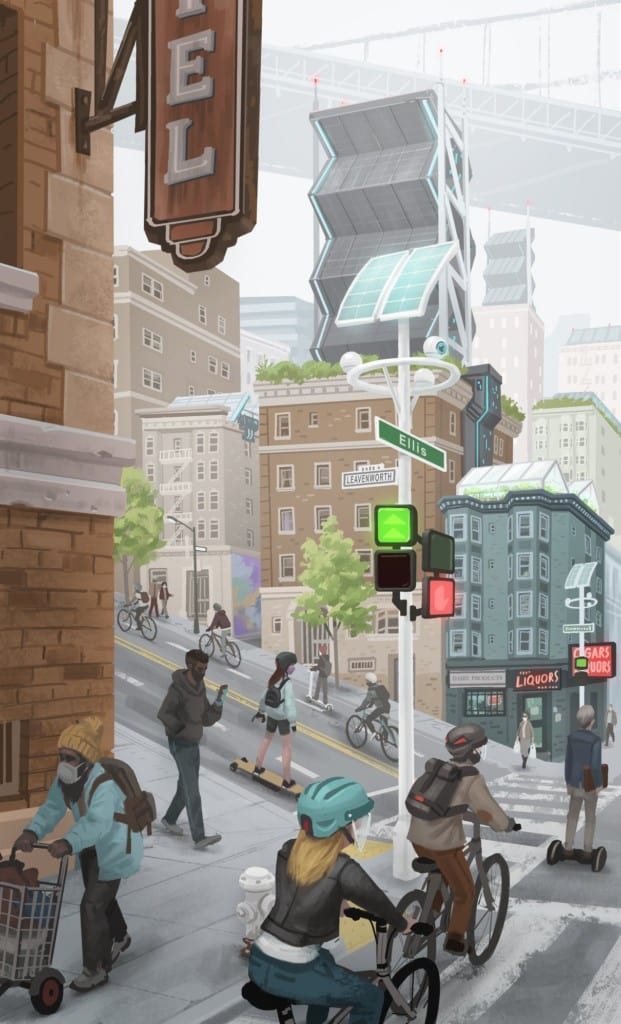
Academy Journey
Lertsachanant always knew he wanted a career in art. “I think it’s stuck with me since I was young, though at times I’ve tried to run away from it. I would ask myself, ‘Why am I not good at math? Why am I not good at science?’ because I thought at times that [an artistic career] was useless. But I always went back to it. In school, I would participate in anything creative with joy.”
A friend who had preceded him to Academy of Art told him about the school and the opportunities it made possible. Among other things, says Lertsachanant, his friend told him about a key event available to select students: the annual Spring Show, where students present their work to an audience of industry professionals looking to employ talented artists.
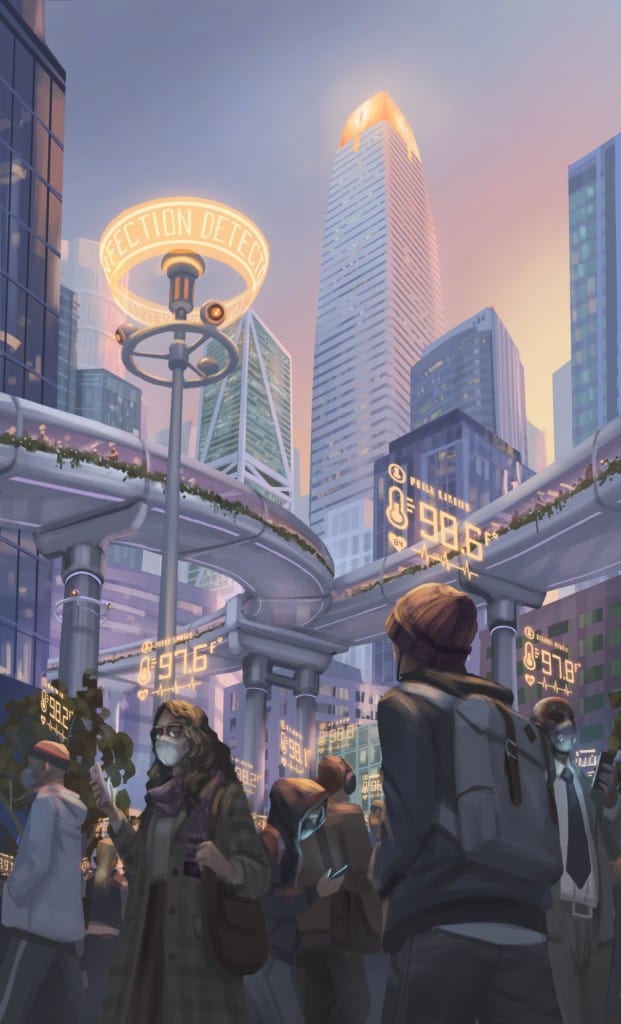
In Lertsachanant’s case, Spring Show was his personal springboard to a job at Electronic Arts, where he now works on the Sims 4 team.
“And of course, the instructors were a big part of my reasoning,” he adds. “I could see that my friend had improved a lot from the time I had last seen his work. So the foundation at the Academy is really good if students work hard enough.
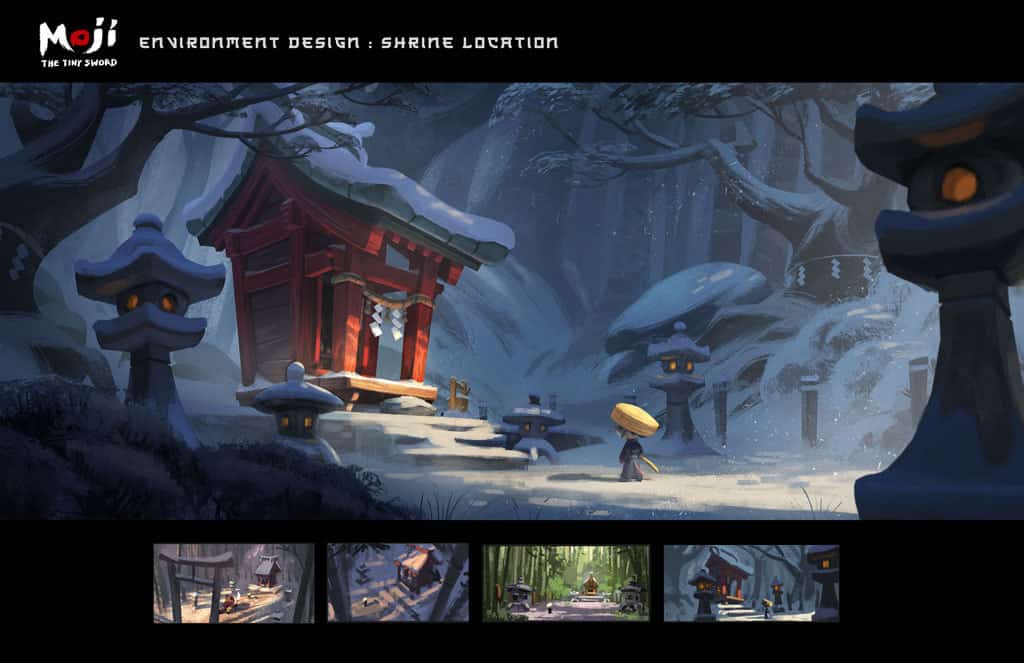
“And many of [the instructors] work in the industry themselves, which is helpful because they can give advice to people who have never worked in the industry. I had an instructor who worked at Zynga…he was able to introduce me to the [Zynga] team and show them my portfolio, which gave me the chance to have an internship there.”
Eight-Panel Panorama
Once established in the industry, Lertsachanant was ready to take on a completely different kind of project: his commission for the Chronicle’s “Throughline” series. Developed in the summer of 2020, his work comprised eight panels that came together to form a panorama. The Chronicle provided him with a detailed brief…and a tight schedule.
“We took about a week and a half to figure out all of it first,” he recalls. “We planned how all the issues would fit together in the end. After that, it was basically one panel each week…. The painting itself took me about three days, and then I would send it over and wait for feedback and make whatever changes they suggested.”
At the time, Lertsachanant had only been living in San Francisco for three years, and he was concerned he wouldn’t get the city scenes right. His contacts at the Chronicle helped him gain confidence.
“We worked together on that. Some of the scenes [the Chronicle] already had ideas for, and then I came with ideas: ‘We could do this location, or this location….’ So, the first ideas came from the Chronicle, but we sort of bounced ideas back and forth.… We worked together as a [collaboration], finding the best solution to represent the story and the topics that they published every week.”
Despite some initial self-doubts, Lertsachanant quickly got into a routine. “I feel that it’s like a sport—at first, you have to warm up, and you don’t feel ready. But when you’re on the field and have played the sport for a while, you realize that now you know how to pace yourself.”
Future City
Each of the eight panels had to tell its own story, and at the same time, each had to connect with the others and the overall composition. And while the Chronicle wanted the illustration to be futuristic, they weren’t looking for science fiction.
“A lot of [the images] came from their references and what I had seen in movies,” says Lertsachanant, “but also how I interpret [what] life in San Francisco after the pandemic could be—the most idealistic version.“
There was no idealizing the tight schedule. “I needed to meet the deadline because they had to print every week. If I missed that deadline for whatever reason, the whole process would be messed up. So, it was like, failure is not an option.”
Images courtesy of Chaowat Lertsachanant
Original article by Greta Chiocchetti of Academy Art U News